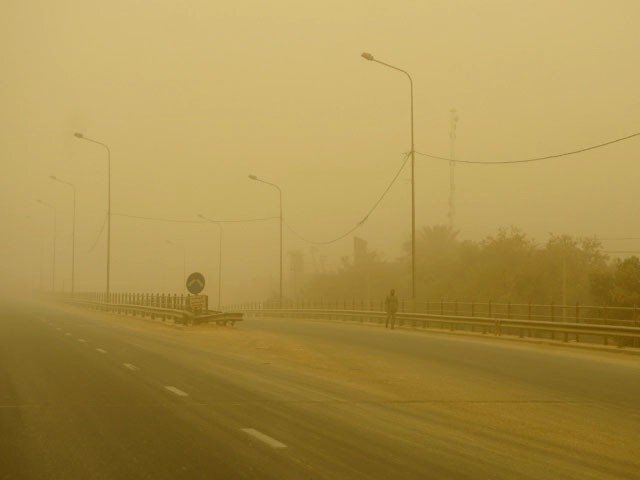Saudi Arabia is "main origin" of sand and dust storms: Iran DOE chief

TEHRAN- The country which is the main source of sand and dust storms in Iran is Saudi Arabia, Iranian Department of Environment Chief Ali Salajegheh has said.
"According to the maps we have prepared, 270 million hectares in Iran's neighboring countries are the origin of sand and dust particles, 90 million hectares of which are located in Saudi Arabia, followed by 24 million hectares in Iraq and four million hectares in Syria," Salajegheh said.
Negotiations are underway through third-party countries with Saudi Arabia in order to persuade it to increase cooperation, Mehr quoted Salajegheh as saying on Monday.
The SDSs phenomenon has been plaguing the country for several years and has caused problems in many provinces. According to experts, natural and human factors are involved in the occurrence and severity of this phenomenon which is mainly caused by excessive consumption of water and drying up reservoirs.
Controlling sand and dust storms requires strengthening diplomacy, and the problem will never be eradicated unless through reaching an international consensus. Over the past two years, the precipitation rate has been on a downward trend, as a result, sources of sand and dust storms (SDSs) have increased compared to a year before, Ahad Vazifeh, head of the national center for drought and crisis management has said.
Controlling sand and dust storms (SDSs) requires strengthening diplomacy, and it will never be eradicated unless international institutions reach a consensus.
Meanwhile, Mohammad Jafar Montazeri, Iran’s Prosecutor General, has said building several dams over the Aras border river and constructing walls on the zero point of the border by Turkey has led to a spread of sand and dust storms into western and southern parts of Iran.
Turkey’s dam buildings over the Tigris and Euphrates rivers in Iraq have caused the desert-covered country to suffer from heavy SDS. The problematic issue here is that these dust and sand storms come from Iraq to Iran, thus disrupting normal life in the border province of Khuzestan.
Dariush Gol Alizadeh, head of Iran's National Climate Change Office (NCCO) of the Department of Environment, told IRNA in May that the hotspots of the dust which haunted the country were in eastern Syria, western Iraq, as well as Jordan, and Saudi Arabia.
These dust sources have appeared many years ago, and due to the drought and water shortages that have occurred in recent years, they have both intensified and increased in number. In fact, abandoned agricultural lands in those countries are a source of SDSs, he explained.
If serious action is not taken in the form of diplomacy and international institutions do not comply with the requirements to eradicate SDSs, the countries will always be haunted by the phenomenon, he lamented.
Tehran meeting
Tehran will host an international meeting on controlling sand and dust storms in July, with the presence of the ministers of 12 countries that give rise to the highest amount of dust, IRNA reported.
It is therefore planned to implement a regional action plan for the Persian Gulf, especially for the countries with the highest dust emissions, Ali Mohammad Tahmasebi, head of the national working group for SDS mitigation, stated.
“There are numerous bilateral and multilateral agreements with neighboring countries, including Iraq, Syria, and Turkey, but no operational action has been taken, so the agreement alone is not enough and this issue should be resolved with the help of international institutions.
Two sub-action plans have been developed for West Asia, including Iraq, Syria, Iran, and the Persian Gulf, and for Central Asia, including its eastern, northern, and northeastern neighbors, including Turkmenistan and Uzbekistan, which should be implemented with the cooperation of the United Nations Economic and Social Organization for Asia and the Pacific (SCAP), the Asia-Pacific Center for Development of Disaster Information Management (APDIM), the United Nations Environment Program (UNEP) and the United Nations Development Program (UNDP), he explained.
FB/MG
Leave a Comment